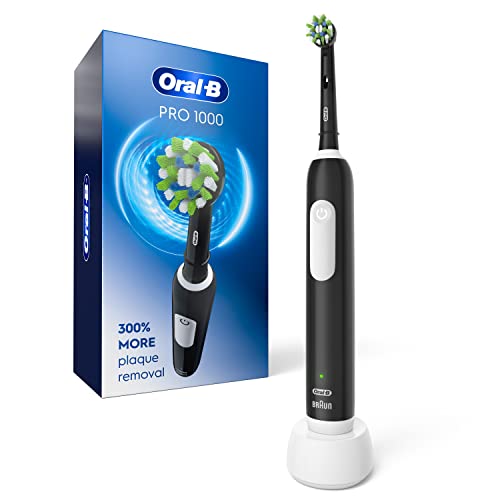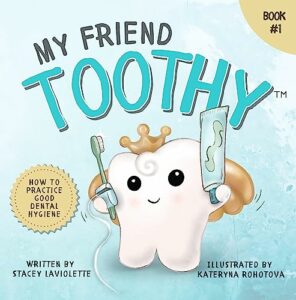In this step-by-step guide, we will discuss the proper technique for brushing your teeth if you have a dry mouth. We understand that dealing with a dry mouth can be uncomfortable and may affect your oral health. That’s why we are here to provide you with the necessary tips and instructions to ensure you maintain good oral hygiene even with a dry mouth.
Achieve a Healthy Smile with Proper Technique
Choose the Right Toothbrush
When selecting a toothbrush, it is important to choose one with soft bristles to avoid aggravating any existing dry mouth condition. Hard bristles can cause discomfort and potentially damage the delicate tissues in your mouth that are already sensitive. To illustrate what we mean, here are a few examples:
- Look for toothbrushes labeled “soft bristles”: When browsing for toothbrushes, make sure to check the packaging for the term “soft bristles.” These brushes are specifically designed to be gentle on your gums and oral tissues.
- Test the bristles with your finger: Before purchasing a toothbrush, run your finger along the bristles to gauge their texture. Avoid brushes with bristles that feel stiff or rigid, as they may be too harsh for sensitive mouths.
- Consider a toothbrush with tapered bristles: Some toothbrushes have bristles that taper at the ends, providing an even gentler brushing experience. These types of brushes can help minimize any potential discomfort caused by dry mouth.
Remember, the goal is to protect your oral health while being mindful of any existing dry mouth condition. By selecting a toothbrush with soft bristles, you can ensure a more comfortable brushing experience and reduce the risk of further irritation.
Use Fluoride Toothpaste
Choose a fluoride toothpaste for better oral health. Opt for a toothpaste that is specifically designed to prevent tooth decay and strengthen enamel. Look for the presence of fluoride on the packaging, as this mineral is crucial in fighting against cavities and protecting your teeth. Fluoride helps to remineralize weakened enamel, making it more resistant to acid attacks from bacteria and sugary foods. By using a fluoride toothpaste regularly, you can significantly reduce the risk of developing cavities and maintain a healthy smile.
When selecting a toothpaste, it’s important to steer clear of products that contain harsh ingredients that might exacerbate dry mouth symptoms. Dry mouth can be caused by various factors, such as medication side effects, certain medical conditions, or simply dehydration. To alleviate dry mouth discomfort, avoid toothpaste that contains foaming agents like sodium lauryl sulfate (SLS) and opt for a more gentle formula. Look for toothpaste that is specifically formulated for dry mouth, as these products are often free from potential irritants and are designed to provide relief and hydration.
Remember, taking care of your teeth with a fluoride toothpaste is crucial for maintaining good oral health. By choosing the right toothpaste and avoiding harsh ingredients, you can ensure that your teeth stay strong, healthy, and free from tooth decay.
Brush Gently
Brushing your teeth and gums gently is crucial for maintaining good oral hygiene. To ensure you’re doing it right, follow these simple instructions:
- Hold your toothbrush at a 45-degree angle to your teeth and gums.
- Using a soft-bristled toothbrush, start brushing your teeth in small, circular motions.
- Make sure to brush all surfaces of your teeth – the front, back, and chewing surfaces.
- Don’t forget to brush your gums as well, using the same gentle circular motions.
- Take your time and be thorough. Aim to brush for at least two minutes, twice a day.
- Avoid applying excessive pressure while brushing. Gentle pressure is enough to remove plaque and debris without causing irritation.
- Pay attention to any discomfort or bleeding while brushing. If you experience these, it may be a sign that you’re brushing too hard. Ease up on the pressure and continue with gentle motions.
- Rinse your mouth with water after brushing to remove any remaining toothpaste and debris.
By following these instructions and brushing gently, you can ensure that you’re effectively cleaning your teeth and gums without causing any unnecessary discomfort or irritation. Remember, a gentle touch goes a long way in maintaining a healthy smile!
Pay Attention to Each Tooth
To ensure proper oral hygiene, it is crucial to pay attention to each tooth and thoroughly clean your mouth. Start by brushing all surfaces of each tooth, including the front, back, and chewing surfaces. Use a soft-bristled toothbrush and gentle, circular motions to avoid damaging your gums.
Take your time while brushing to ensure that you reach every corner of your mouth. Spend at least two minutes brushing your teeth, giving equal attention to each tooth. Be sure to clean the hard-to-reach areas such as the back molars and the inner surfaces of your teeth.
Remember to brush your tongue as well, as it can harbor bacteria and cause bad breath. After brushing, rinse your mouth thoroughly with water to remove any leftover toothpaste or debris.
By following these instructions and paying attention to each tooth, you will maintain good oral hygiene and keep your teeth and gums healthy.
Don't Forget Your Tongue
Brush your tongue along with your teeth. This simple practice helps remove bacteria and freshens your breath, promoting overall oral health. To effectively clean your tongue, follow these easy steps:
- Start by moistening your toothbrush with water.
- Apply a small amount of toothpaste or mouthwash onto the bristles.
- Extend your tongue out as far as possible, ensuring that it is relaxed.
- Gently brush the surface of your tongue with the toothbrush in a back-and-forth motion.
- Remember to cover the entire tongue, including the back and sides.
- Be careful not to brush too forcefully to avoid causing any discomfort or irritation.
- Rinse your mouth thoroughly with water or mouthwash to remove any residual toothpaste or mouthwash.
By incorporating tongue brushing into your oral hygiene routine, you can improve your overall oral health and maintain fresh breath.
Rinse with an Alcohol-Free Mouthwash
After brushing, rinse your mouth with an alcohol-free mouthwash. This simple step can greatly contribute to your oral hygiene routine by reducing bacterial growth and maintaining a healthy mouth. Here’s a guide on how to effectively rinse with an alcohol-free mouthwash:
- Dispense the recommended amount of mouthwash into a cup or directly into your mouth. Check the product label for the appropriate dosage.
- Take a small sip of the mouthwash and swish it around your mouth for about 30 seconds. Make sure the liquid reaches all areas, including your teeth, gums, and tongue.
- Gently gargle the mouthwash at the back of your throat for a few seconds, ensuring it reaches the areas that are difficult to clean with a toothbrush.
- Spit the mouthwash out into the sink. Avoid swallowing the liquid, as it may contain bacteria and debris from your mouth.
- Rinse your mouth with water to remove any residual mouthwash.
- Follow up with your regular oral care routine, such as flossing and using a tongue scraper, if desired.
By incorporating this practice into your daily routine, you can effectively maintain oral hygiene without exacerbating dry mouth symptoms. Remember, using an alcohol-free mouthwash is particularly important for those with dry mouth, as alcohol-based mouthwashes can contribute to further dryness and discomfort.
Consider Using Saliva Substitutes
If your dry mouth persists, try using saliva substitutes or artificial saliva to alleviate discomfort and maintain oral moisture. Saliva substitutes are specially designed products that mimic the composition and function of natural saliva. These substitutes provide lubrication and moisturization for the mouth, helping to alleviate dryness and discomfort.
To use saliva substitutes effectively, start by carefully reading the instructions provided by the manufacturer. Some products may need to be sprayed directly into the mouth, while others may require swishing or gargling. Follow the recommended dosage and frequency of use as specified on the packaging.
When using saliva substitutes, make sure to distribute the product evenly throughout the mouth. Swish or gargle the substitute, ensuring that it reaches all areas, including the gums, tongue, and cheeks. This will help to relieve dryness and provide a more comfortable oral environment.
Remember, saliva substitutes are not a permanent solution for dry mouth, but they can provide temporary relief. If your dry mouth persists or worsens, it is important to consult with a healthcare professional to identify the underlying cause and explore additional treatment options.
Tips for Gentle Oral Care
In conclusion, we have explored the essential techniques for brushing your teeth effectively when experiencing dry mouth. We have emphasized the significance of gentle brushing to avoid further irritation and damage to your oral health. Additionally, we have highlighted the importance of selecting the right products, such as toothpaste and mouthwash, specifically designed for dry mouth. Lastly, we have discussed the potential benefits of incorporating additional measures, such as staying hydrated, using saliva substitutes, or seeking professional advice from a dentist. By implementing these tips, we hope you can maintain your oral hygiene and find relief from the discomfort of dry mouth. Remember, taking care of your teeth is crucial, even if you are faced with the challenges of a dry mouth.
Gentle Oral Care Essentials
Managing Dry Mouth
Mastering the Art of Effective Brushing
- Hold your toothbrush at a 45-degree angle: Position your toothbrush against your teeth and gums at a 45-degree angle. This allows the bristles to clean both the surface of your teeth and the gumline effectively
- Use gentle, circular motions: Instead of scrubbing your teeth vigorously, use gentle circular motions while brushing. This technique helps to remove plaque and food particles without causing damage to your gums or tooth enamel
- Brush all surfaces of your teeth: Make sure to brush all the surfaces of your teeth, including the front, back, and chewing surfaces. Pay special attention to the gumline, where bacteria tend to accumulate
- Don’t forget your tongue: Brushing your tongue is equally important. Gently brush your tongue to remove bacteria and freshen your breath
- Time yourself: Aim to brush your teeth for at least two minutes. Use a timer or an electric toothbrush with a built-in timer to ensure that you brush for an adequate amount of time
- Remember, developing a proper brushing technique takes practice, so don’t worry if it feels a bit awkward at first. With time, you’ll become more comfortable and proficient in maintaining good oral hygiene

























